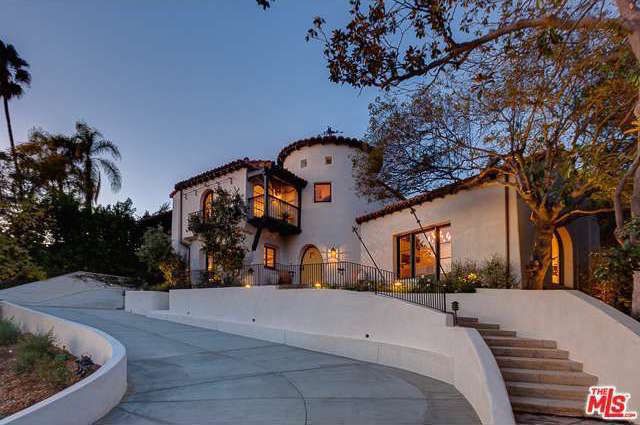Frank Gehry's Fight For Sunset Boulevard
/There is no more controversial site in Los Angeles right now than 8150 Sunset. The coveted spot on Sunset Boulevard is stuck in a battle the city has seen all too frequently - development vs. preservation. THE BUILDING IN QUESTION IS THE LYTTON/CHASE BANK with glass walls and a funky zigzag roof. Frank Gehry, however, is currently designing a modern development to replace the building, much to the chagrin of preservationists. Whether the bank will be booted for the new building, or if the two will find a way to coexist, is our LA architecture saga.
The proposed project, located at the intersection of Sunset and Crescent Heights Boulevard was approved in November. It features five buildings with two residential towers, a shopping center, and a central courtyard. Perhaps the most well-known living architect in the world, Gehry has lent his modern design to dozens of unique and controversial buildings all over Los Angeles, including the futuristic Walt Disney Concert Hall.
The historic Lytton Savings Bank, designed by architect Kurt Meyer in 1960, is a notable example of post-war bank architecture in Los Angeles. It currently serves as a Chase Bank branch but it was designed as the executive headquarters for Lytton Savings and Loan Association. Featuring Googie and New Formalism stylistic influences, its got style you can bank on (And yes, I know how corny that sounds but I am leaving it in because it popped into my head and made me laugh).
Recently, the Los Angeles City Council voted unanimously to designate the Lytton Savings building a historic-cultural monument. Preservationists were overjoyed at the outcome. The decision last month may not necessarily save the building, but it does delay the potential demolition for another year. Now, there are three potential outcomes: destroy the building, relocate it, or build Gehry’s new structure around it.
Gehry, however, has already made his opinion known about the building. In an October letter to the LA City Council, he discussed the issues with working around the bank, writing:
“We tried dozens of massing options for this project to arrive at the best solution. We looked at options using the bank building and without the bank building. I do not come to this recommendation lightly or without having done my homework, but I really do not believe that I can design a successful project while keeping the bank on the site.”
Gehry goes on to explain his own experience watching his past designs meet the wrecking ball, and urges the city council not to get sentimental about the bank. When asked to protest on his buildings’ behalf, he explains, “I declined because it was clear to me that time had passed and the people behind the demolishing were interested in creating new buildings for a new generation of activities.”
The future for the Lytton Savings Bank is questionable but relocating it seems like the best compromise. This would allow the building’s architecture to remain intact while creating space for a new development and the opportunities that come along with it for people in the community. Structural engineers have quoted the cost of moving the building at $1 million, a relatively small fee for this industry.
Of course there is the question of where to move it, but there are many likely empty sites that would welcome a building of such architectural significance and integrity. The surrounding Sunset area is already filled with strip malls and fast food restaurants, so a stylish new housing and retail development would be a welcome change for the neighborhood. While we as a community should certainly do our best to preserve historic buildings, we also must do what is best for us in this day and age.
This presents an interesting question. “Should we be concerned about demolishing significant or historic buildings if the present community requires something bigger or better, OR is there a middle ground that allows for historic preservation within the scope of new construction? Perhaps the current restoration and repurposing of the Herald Examiner building, designed by famed architect Julia Morgan, will pave the way for mutual consensus on projects of this sort in the future.
What is YOUR opinion?
Share below!















